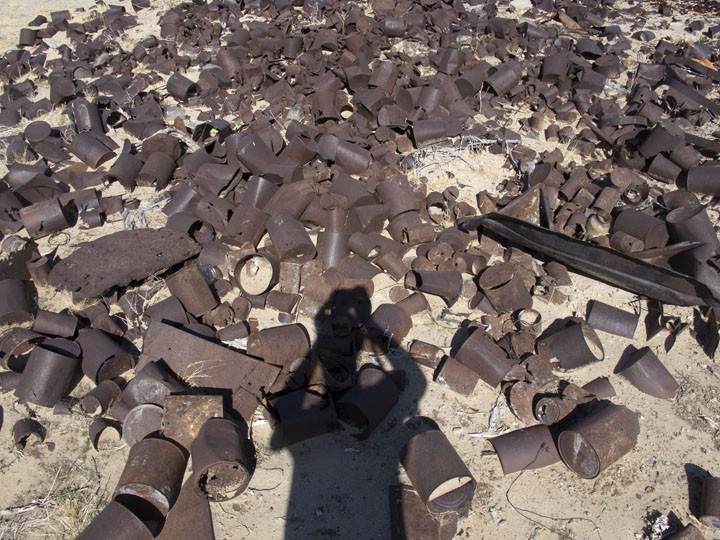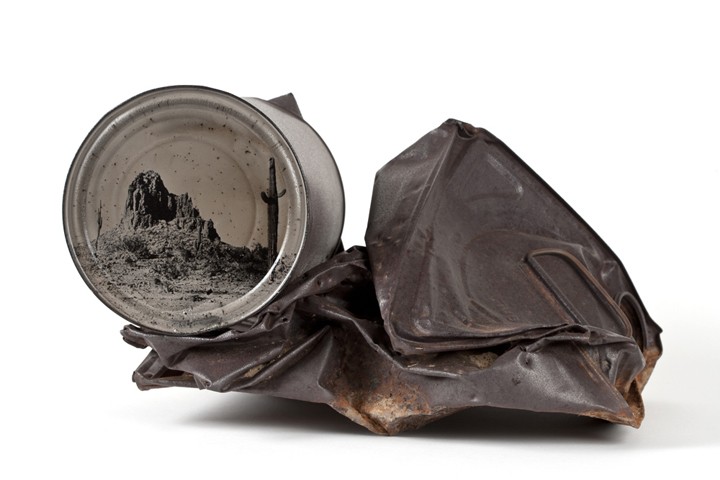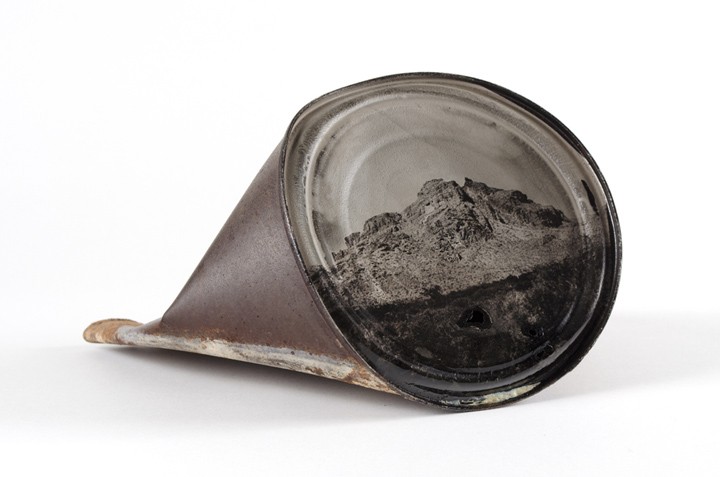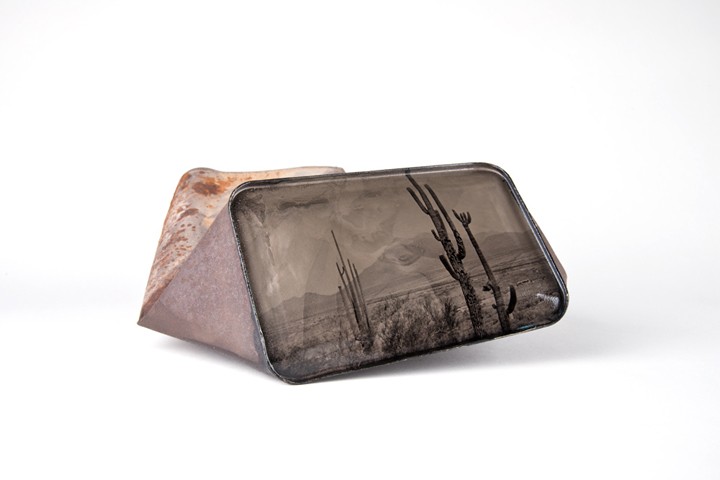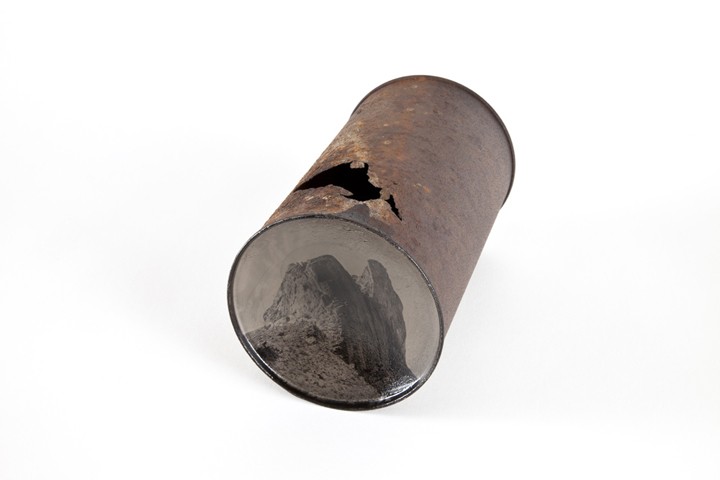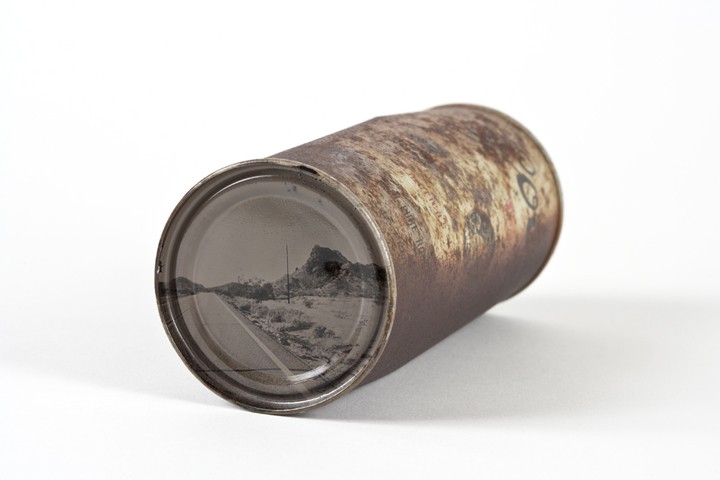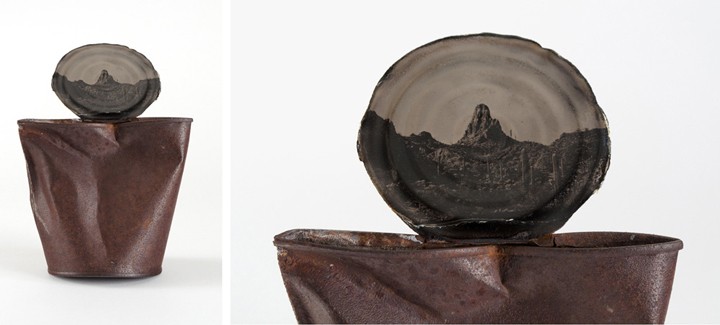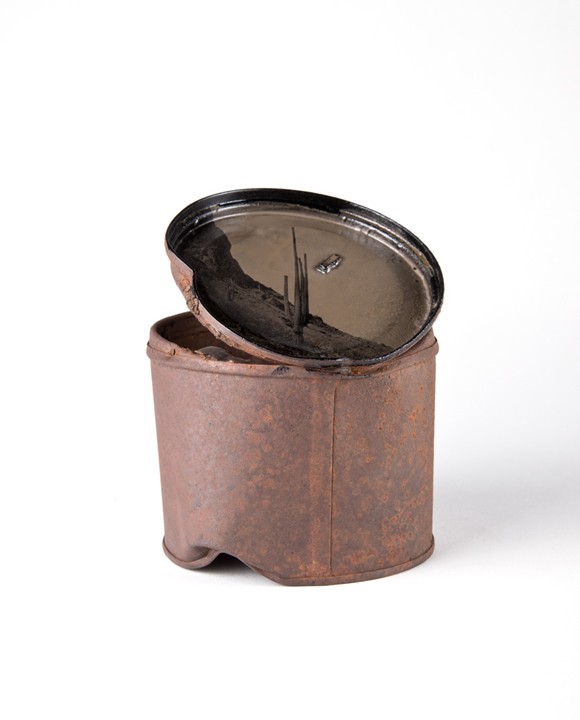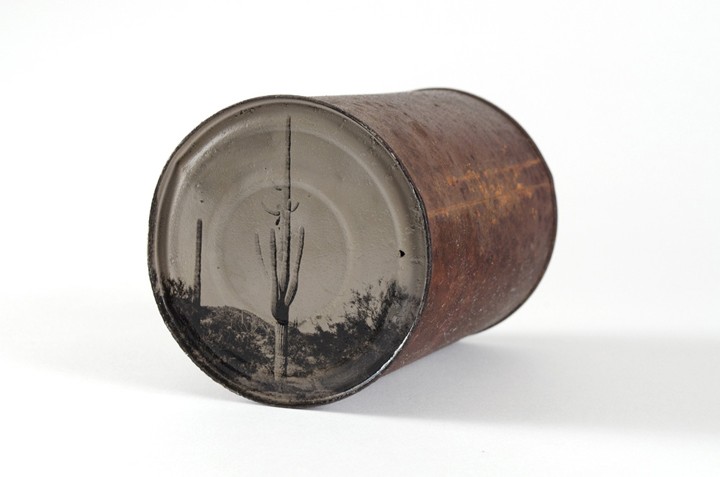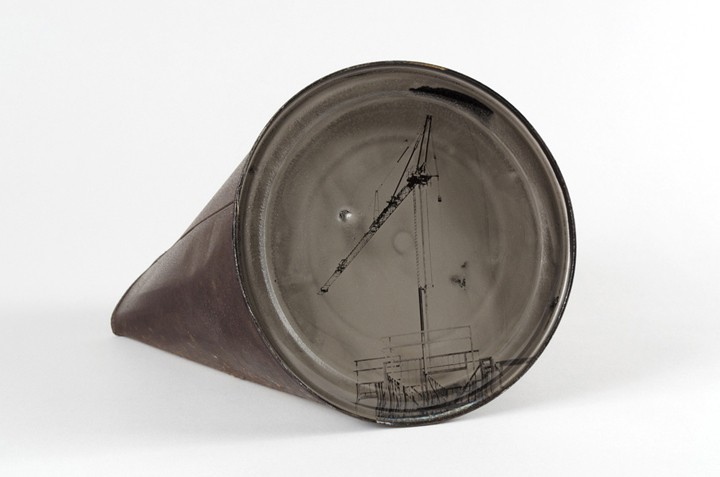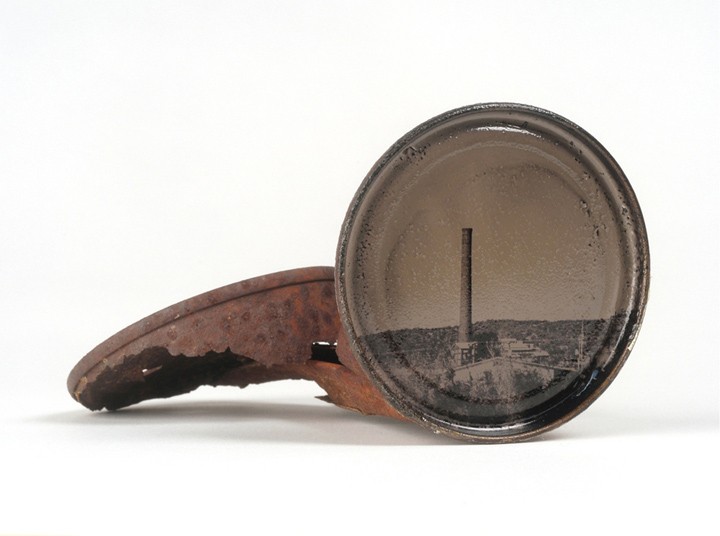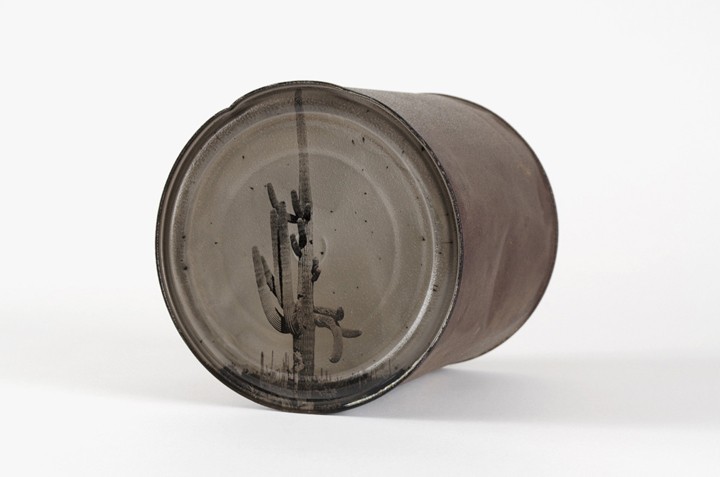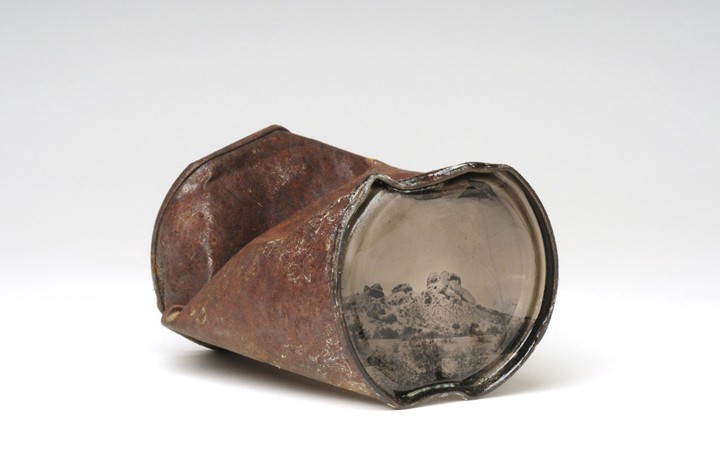As long as people have been in the American West, they have found its barren desert landscapes to be ideal for dumping garbage and forgetting. I was born in Yuma, Arizona in 1980 and I have never known this landscape without the forgotten debris of urban sprawl. Today, the notion of land untouched by the hand of man is so foreign it might as well be make-believe.
The deserts of the West have special significance in the history of photography. By the time I became an adult I began to see that the Arizona desert was far different from the scenery once photographed by Timothy O’Sullivan in the 1860s. I have explored this landscape with an awareness of the photographers who have come before me, and this awareness has led me to pay close attention to the traces left behind by others.
I collect discarded cans from the desert floor, some more than four decades old, which have earned a deep reddish-brown, rusty coloration. This rich patina is the evidence of light and time, the two main components inherent in the very nature of photography. For this body of work, I manipulate these found objects through a labor-intensive 19th century photographic process known as wet-plate collodion. I create images on their surfaces that speak to human involvement with this landscape. The results are objects that have history as artifacts and hold images connected to their locations.
